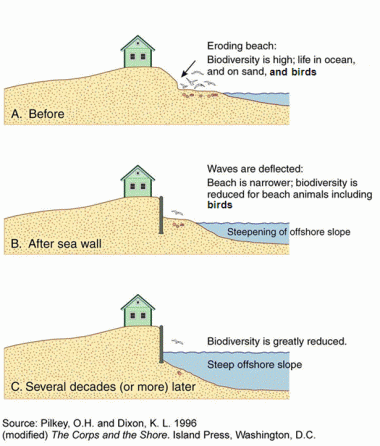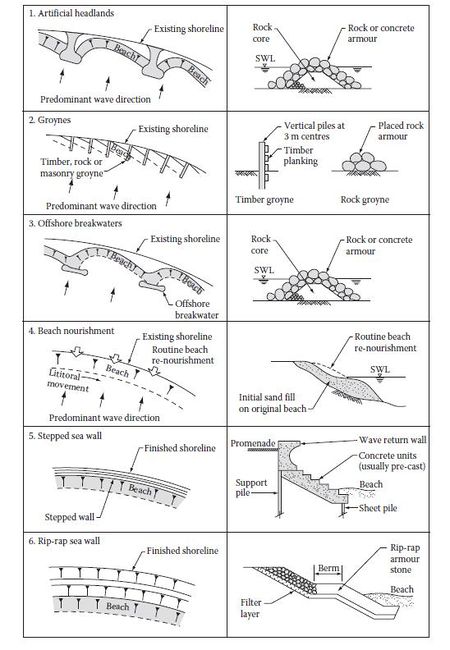The Single Strategy To Use For Shore Protect Team
Table of ContentsExcitement About Shore Protect TeamThe smart Trick of Shore Protect Team That Nobody is Talking AboutThe Single Strategy To Use For Shore Protect TeamThe Best Guide To Shore Protect TeamThe Only Guide to Shore Protect TeamThe Only Guide for Shore Protect TeamA Biased View of Shore Protect Team
Decline in residential or commercial property worth: As the location tourism is impacted by erosion, so after that is the economic situation. Customers are much less likely to browse for a beach residence that might be ruined anytime by the impending flooding and erosion emergency situation. Subsequently, home worth can drop exceptionally and impact the whole area.Whether a beach is just tiny and crowded or has to close entirely for the safety of the environment and neighboring residential properties, this greatly impacts tourist. Consequently, neighborhood economies are influenced (http://nationfeatured.com/directory/listingdisplay.aspx?lid=78209). Risk of injury: The increased risk of flooding and structural failures causes an enhanced risk of injury to neighboring tourists and area participants

Shoreline stablizing is straight relevant to their work. Beachfront hotels: Due to the fact that coastline erosion effects tourist, it impacts the success of waterfront resorts.
6 Easy Facts About Shore Protect Team Described
This eventually causes closures and abandoned beachfront properties. Coastal business companies: No travelers means no company. For those services accommodating citizens, their home goes to risk of damage from erosion and flooding. Coastal state parks: State parks that exist along shorelines go to risk of damage. Not just to the manufactured structures and residential or commercial properties on website, but also to the all-natural ecological communities that exist within.
Soft stabilization is a better option for the environment and even more lasting overall. Difficult stablizing makes use of synthetic frameworks as protection to manage erosion. Normally, these frameworks are set up at right angles or alongside quit sand activity and minimize the pressure of waves. Most forms of difficult stabilization like seawalls and sheet steel are not suitable for coastline stabilization.
All About Shore Protect Team
There's likewise not adequate evidence of their effectiveness depending on the sort of shoreline and regional problems. Difficult stabilization strategies tend to be harder to set up and don't match the all-natural visual, protruding like a sore thumb and damaging local ecological communities in several circumstances. Coastline nutrition is the procedure of adding shed sand and debris back to coastlines after disintegration has occurred.
TrapBags aid in the procedure of coastline sustenance by protecting natural communities and allowing plants to grow. They're: Eco friendly: You can utilize indigenous soil both to surround and to load the TrapBags.

The 9-Second Trick For Shore Protect Team
Easy to set up: Ease of installment suggests TrapBags can be released promptly in case of an emergency. They can likewise be set up without any type of hefty machinery. Budget-friendly: TrapBags are perfect for both little and big areas of shoreline. They provide an economical option to cover tasks of any dimension.
Combined with a high building and construction expense, this has actually resulted in boosting use various other soft engineering coastal administration options such as coastline replenishment. Seawalls are created from numerous materials, many typically reinforced concrete, stones, steel, or gabions. Various other feasible building products include plastic, wood, aluminum, fiberglass composite, and biodegradable sandbags made from hemp and coir. The appropriate seawall style relies on location-specific aspects, consisting of surrounding erosion processes. There are three main sorts of seawalls: vertical, bent, tipped, and mounds (see table listed below). A record published by the United Nations Setting Programme (UNEP) recommends that the tsunami of 26 December 2004 caused less damage in the locations where all-natural obstacles were present, such as mangroves, reef or coastal plants.
All-natural obstacles, such as reef and mangrove forests, avoid the spread of tsunamis and the circulation of seaside waters and mitigated the flooding and surge of water. A cost-benefit method is an efficient way to establish whether a seawall is suitable and whether the benefits deserve the expense.
The Ultimate Guide To Shore Protect Team
A seawall is a fixed function which can clash with the dynamic nature of the shore and hinder the exchange of sediment in between land and sea. The table below summarizes some favorable and adverse effects of seawalls which can be made use of when contrasting their performance with various other coastal management options, such as beach nourishment. [] Benefits and downsides of seawalls according to Short (1999) Benefits Downsides Long-term remedy in comparison to soft coastline sustenance.

This can create coastlines to dissipate, making them ineffective for coastline goers. Typically, seawalls can be an effective means to manage seaside erosion, however just if they are created well and out of materials that can withstand the pressure of continuous wave power. Some understanding is required of the coastal processes and morphodynamics details to the seawall area.
Examine This Report about Shore Protect Team
The proper seawall style relies upon location-specific aspects, consisting of surrounding disintegration processes. There are 3 major kinds of seawalls: vertical, curved, tipped, and piles (see table below). A report released by the United Nations Atmosphere Program (UNEP) suggests that the tidal wave of 26 December 2004 created less damage in the locations where natural barriers existed, such as mangroves, coral reefs or seaside plant life.
Natural barriers, such as coral reefs and mangrove forests, protect against the spread of tsunamis and the circulation of seaside waters and reduced the flood and rise of water. A cost-benefit approach is a reliable way to establish whether a seawall is suitable and whether the advantages are worth the expense.
Our Shore Protect Team Statements
A seawall is a fixed function which can conflict with the vibrant nature of the coastline and restrain the exchange of debris between land and sea. Benefits and negative aspects of seawalls according to Short (1999) Benefits Drawbacks Long term option in comparison to soft beach nutrition.

This can cause beaches to dissipate, providing them pointless for coastline goers. Normally, seawalls can be a successful means to control coastal erosion, but just if they are built well and out of products that can withstand the force of continuous wave power.